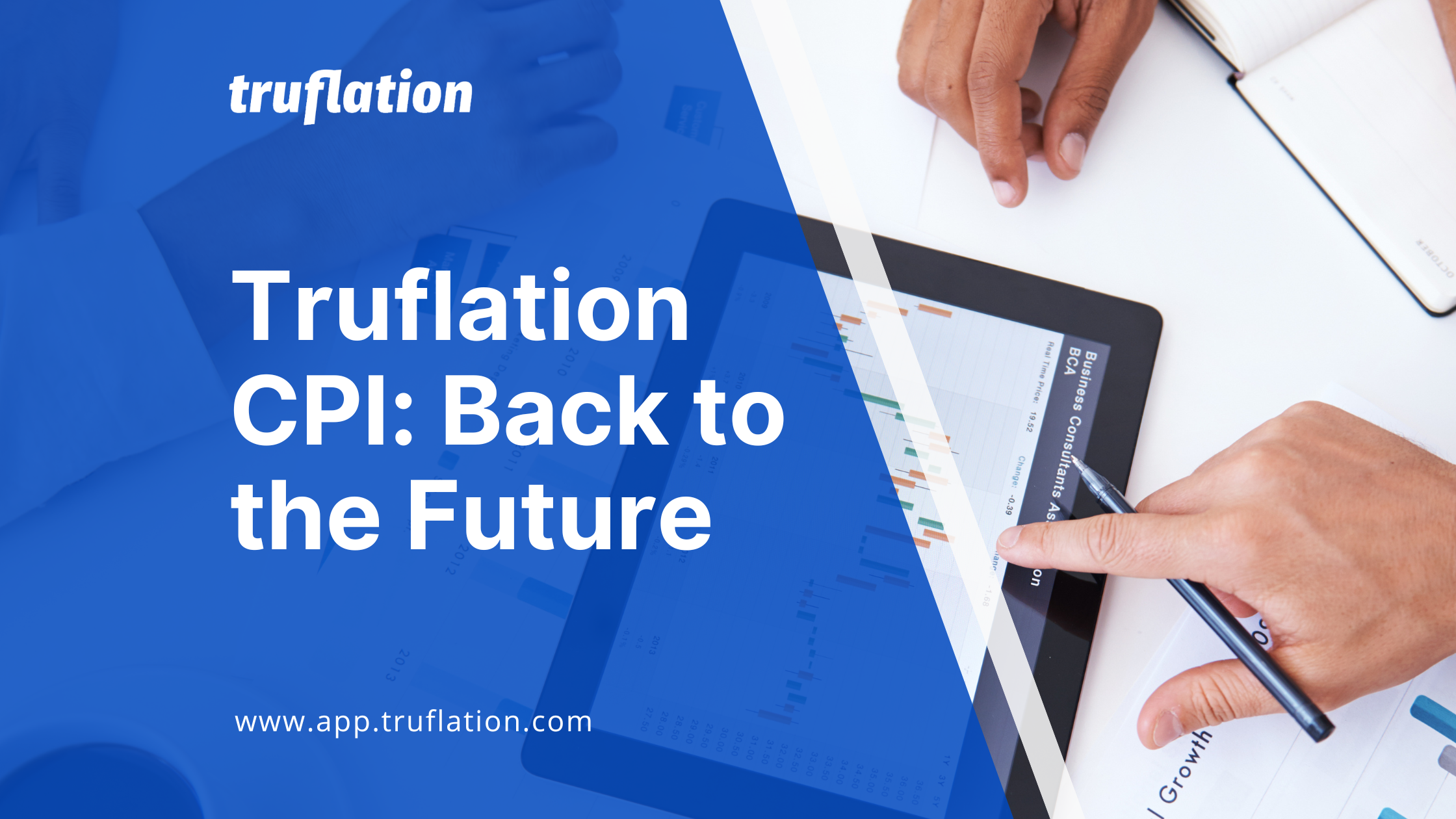Truflation - CPI: Back to the Future

The BLS’s CPI report is now in. What does it tell us about the US inflation rate, and what is driving the increases we see at Truflation? Let’s dive into the report and compare it to our insights.
CPI rate of inflation for the 12 months ending April was 8.3%. Their rate was lower than the Truflation figure of 11.65% on 1st May. Removing energy and food, the CPI annual inflation was still 6.2%. Sadly, their data is for April. This data lag makes it difficult to identify core inflation drivers in the economy. Many CPI categories that saw a decline in prices relate to consumer spending areas such as apparel and household items/appliances.
In our daily data, we have seen the rate of inflation dropping during May. However, Truflation saw a faster increase in food and rent prices in April 2021 than the current increases in May 2022.
Rental prices were up 16.81% year on year (YoY) in our index. The USDL report highlights similar themes around increases in housing (shelter - their category), food, and energy, similar to what we have seen in our daily figures.
CPI energy index rose 30% over the last year, and the CPI food index increased 9.4%, the largest 12-month increase since the period ending April 1981! We are going back to the future, it’s official.
Joking aside, virtually every product or service requires energy for production and distribution, whether or not it is made in the US or distributed there (food, housing, airlines, transportation services, the list goes on). Houses, businesses, manufacturing, and even energy production need energy to maintain their normal day-to-day operations. Truflation shows the huge increases in energy costs (Gasoline - 45% YoY, Utility-Natural Gas 30.72% YoY, Electricity - 11% YoY) are driving the increases in food prices and beyond into retail, transportation, and the economy as a whole.
Food prices are doubly impacted by the increase in demand for grain globally due to the war in Ukraine, which will create shortages of grain and sunflower oil later this year. When the demand outstrips available supply or supply is constrained by geopolitical events, prices rise. Futures contracts for grain and food-grade oils have increased exponentially over the last few months as the market priced-in increases to commodity prices over the medium term.
One piece of good news was that the prices of used cars/trucks saw their second monthly decline in the CPI Report. However, Truflation index shows that the prices of used cars/trucks have increased 20% year on year and the price of new cars by 13% year on year in May. Even with monthly declines, the prices of new and used vehicles remain elevated well beyond their pre-Covid levels. This ‘scarcity’ in vehicle supply has made prices more sensitive to demand but it has also generated non-linear increases in prices. The question is whether this monthly decline in prices is due to consumers tightening their belts in the face of rising prices or the supply bottlenecks we have seen around new vehicle production easing along with worldwide chip shortages.
If the BLS is to be believed, then you can buy a car cheaper than you could in April but it is going to cost you double to fill it up at the pump. So, if you can’t afford to fill up the car, are you going to buy one?
In conclusion, more data is needed to make sense of the statistical ‘noise’ in the CPI numbers; at Truflation we are working on sorting through the noise daily to figure out what really drives inflation.
One thing is for certain, everything is more expensive than a month ago. You aren’t imagining it either.
About Truflation
At Truflation, we believe in data and methodology, not sentiment and surveys. Check our Truflation Dashboard. We created Truflation based on real market price data collected from 30 different data sources daily to deliver crucial business intelligence around inflation. We provide a daily, unbiased, data-driven, real-market US inflation rate and other on-chain economic metrics to DeFi products and Web3 applications.
Our mission is to offer the most objective, decentralized, and current economic and financial information alternative in the form of on-chain price indexes to enable a new generation of blockchain products. We help developers create tools that help people maintain their purchasing power, navigate their portfolios through a challenging macroeconomic landscape, and propel the DeFi space into the new era of an inflation-proof and blockchain-powered economy.
Article written by CeAnn Simpson

